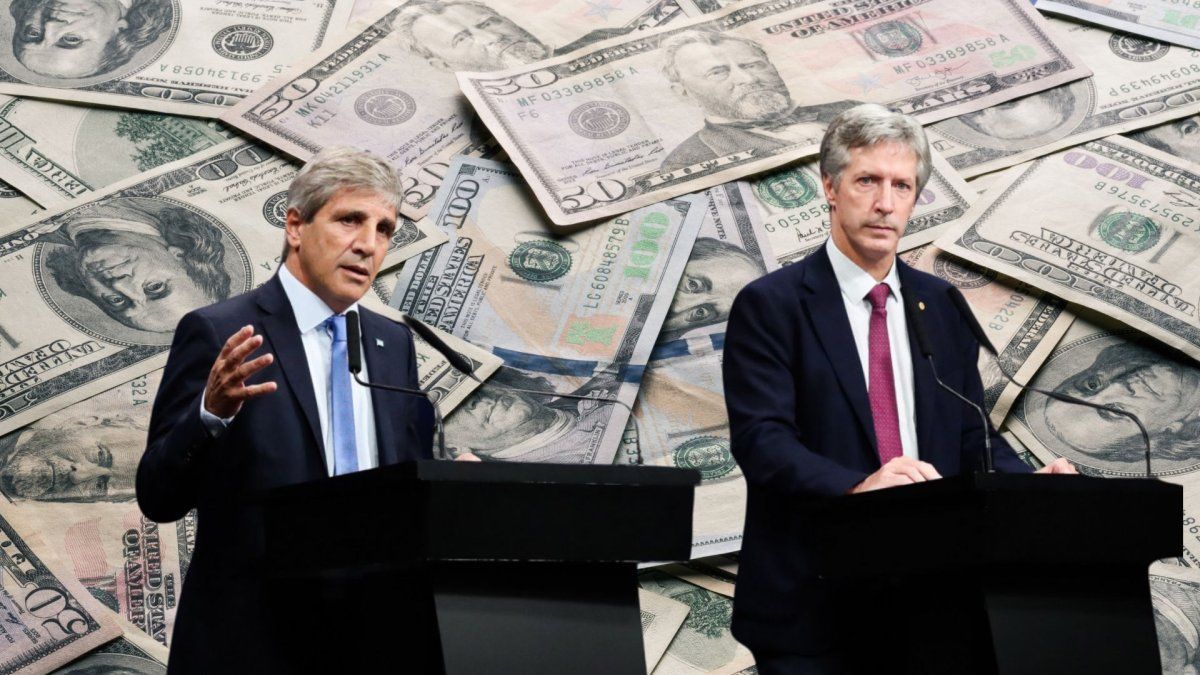Julio left a complex balance: a strong rise in the dollar in the middle of the LEFIS DISASSEMBLY and purchases of official currencies that failed to compensate for the high coverage demand. However, the arrival of IMF fundsadded to the purchase of dollars that the treasure and an acceleration of the liquidation of the agriculture has been relied, will allow to show an improvement in the reserves of the Central Bank (BCRA).
And the dollar?
The dynamics of the exchange rate is maintained as the main thermometer of expectations. After weeks of pressure, the exchange market showed some relief towards the closing of Friday. However, everything indicates that there are no reasons to wait for a short term.
As they pointed out from LCG In its latest report, “there is no reasons for the dollar to fall and the pulse of the rise will be ruled by the evolution of external accounts.”
Dollar Blue
The dollar reached $ 1,335 last Friday.
Depositphotos
In that framework, and after a strong demand for liquidity by the banks, The City expects new measures from the Ministry of Economy that allow ordering the Financial Front. From LCG they suggested some tools available as “passes window, intervention in the secondary lecaps market”, also useful for “lowering rates volatility.”
One of the novelties that will begin to be implemented this week is the rise of lace arranged by the Central Bank. This key measure points to deepen monetary absorption To reduce exchange pressures. Consequently, it could be reflected in Greater stability in ratesthe next few days.
Inflation: Without Pass Through in sight
In the inflationary front, Julio’s preliminary data bring some relief. Monthly inflation would be located around 2%with a variation of just 0.3% weekly in food and drinks in Greater Buenos Aires, and a four -week mobile average 2.1%according to the latest surveys of LCG, ANALYTICS and other consultants.
This behavior is relevant: the recent devaluation of the official exchange rate – superior to 10% – barely moved to consumer prices. This suggests that inflationary transmission was bounded, at least for now. The question, however, moves to Augustwhen part of that effect could begin to be reflected.
Inflation Prices Consumption

Inflation, one of the cornerstones of Milei’s management.
Mariano Fuchila
From Econviewsthey warned: “You don’t have to sing victory: the battle is far from being won. August probably captures part of the effect, although the bet is limited. It will be a good test to measure the solidity of the program.”
In addition, they pointed out: “The coming months will be a decisive test: if the variables under control are maintained and the government obtains a good result in the elections, the program may show that it has more resilience of what many believed. Otherwise, the uncertainty will gain ground again.”
In a context of restricted consumptionit is likely that the impact of the devaluation on prices continues to be moderate, at least in the short term. But caution remains the rule for investors.
Key data on the agenda
This week, several indicators will be published that will serve to take the pulse of the economic program:
-
Wednesday 6: Indec spreads Price and Foreign Trade Indices of the second quarter.
-
Wednesday 6: The BCRA publishes the results of the Survey of market expectations (REM) July.
-
Thursday 7: The Manufacturing and Minera Industrial Production Indices June.
-
Thursday 7: The Construction activity index and the Monthly Monetary Report of the BCRA.
Dollar Blue Finance Mercadas Vivo Inversiones

What comes on the economic agenda for the first week of August.
Depositphotos
Risk factors: international policy and context
August will not only be an economic test, but also political. The legislative elections of September 7 in the province of Buenos Aires will test the legitimacy of the economic course. A favorable result for the ruling could consolidate the fiscal, exchange and monetary strategy. Otherwise, the ghost of uncertainty will gain ground again.
Internationally, the US president, Donald Trumplaunched a new offensive in its commercial war on Thursday night, by presenting an ambitious plan that redefines the rules of global trade. The proposal draws a world map of tariffs ranging between 10% and 50%, which varies depending on whether or not to close a commercial agreement with their government before August 1. The measure will affect exports from about 200 countries to the United States and begin to rule next Thursday.
Source: Ambito




